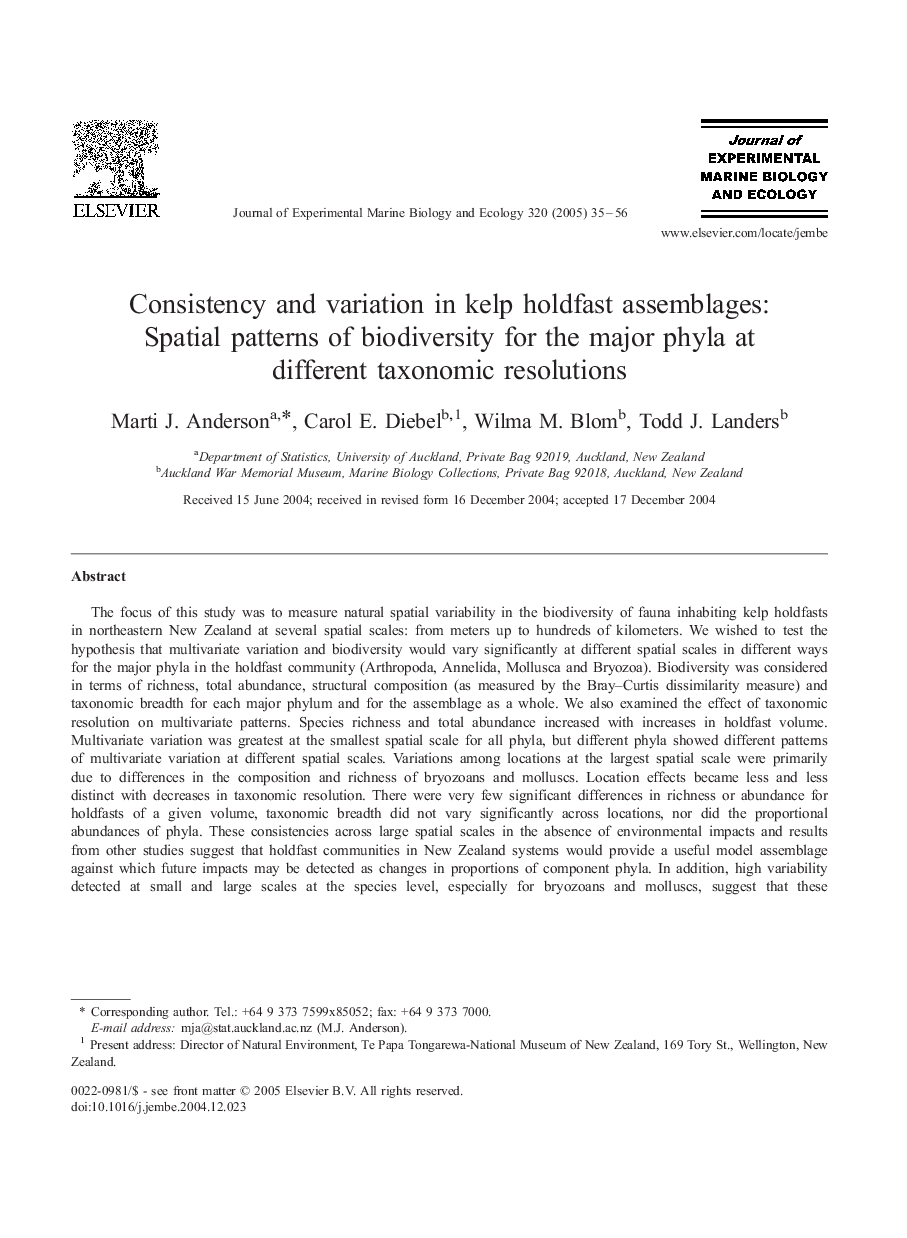| Article ID | Journal | Published Year | Pages | File Type |
|---|---|---|---|---|
| 9448782 | Journal of Experimental Marine Biology and Ecology | 2005 | 22 Pages |
Abstract
The focus of this study was to measure natural spatial variability in the biodiversity of fauna inhabiting kelp holdfasts in northeastern New Zealand at several spatial scales: from meters up to hundreds of kilometers. We wished to test the hypothesis that multivariate variation and biodiversity would vary significantly at different spatial scales in different ways for the major phyla in the holdfast community (Arthropoda, Annelida, Mollusca and Bryozoa). Biodiversity was considered in terms of richness, total abundance, structural composition (as measured by the Bray-Curtis dissimilarity measure) and taxonomic breadth for each major phylum and for the assemblage as a whole. We also examined the effect of taxonomic resolution on multivariate patterns. Species richness and total abundance increased with increases in holdfast volume. Multivariate variation was greatest at the smallest spatial scale for all phyla, but different phyla showed different patterns of multivariate variation at different spatial scales. Variations among locations at the largest spatial scale were primarily due to differences in the composition and richness of bryozoans and molluscs. Location effects became less and less distinct with decreases in taxonomic resolution. There were very few significant differences in richness or abundance for holdfasts of a given volume, taxonomic breadth did not vary significantly across locations, nor did the proportional abundances of phyla. These consistencies across large spatial scales in the absence of environmental impacts and results from other studies suggest that holdfast communities in New Zealand systems would provide a useful model assemblage against which future impacts may be detected as changes in proportions of component phyla. In addition, high variability detected at small and large scales at the species level, especially for bryozoans and molluscs, suggest that these communities may also provide unique opportunities for studying and understanding sources and functions of marine biodiversity.
Related Topics
Life Sciences
Agricultural and Biological Sciences
Aquatic Science
Authors
Marti J. Anderson, Carol E. Diebel, Wilma M. Blom, Todd J. Landers,
